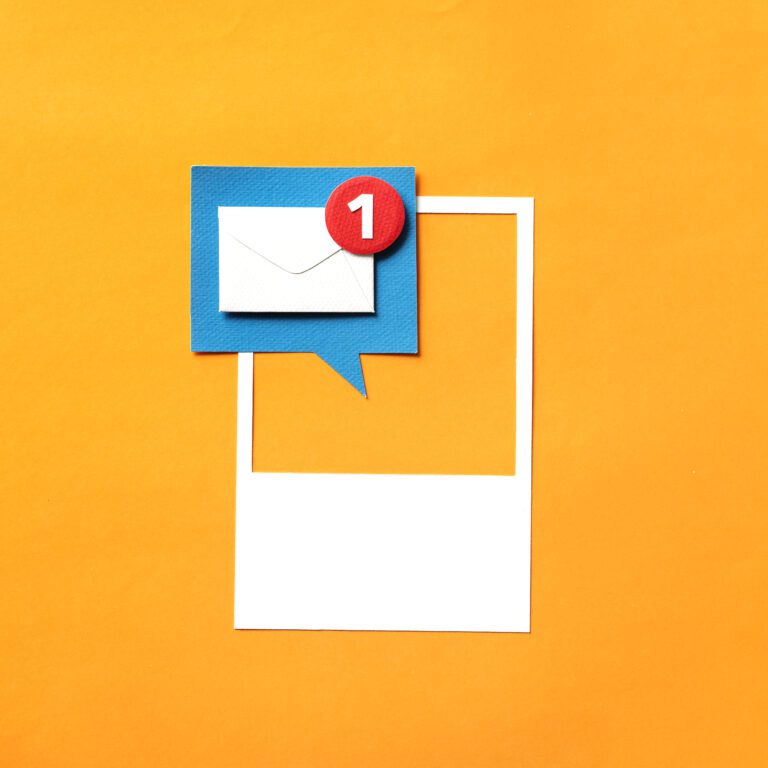Email Marketing Automation Mistakes That Hurt Conversions

I hope you enjoy this blog post. If you want Hello Bar to grow your leads, click here.
Author:
Mansi
Published
September 2, 2025

Table of Contents
Email marketing automation sounds like the holy grail for businesses. You set up workflows, segment your audience, let the system run, and supposedly sit back while conversions roll in. But reality doesn’t work like that. Automation can just as easily kill your results if it’s done the wrong way.
Plenty of companies put in the effort, buy the tools, and still see low engagement. The issue usually isn’t the idea of email marketing automation itself. It’s the mistakes hiding inside the process. Small missteps add friction, frustrate customers, and cut conversions short.
This isn’t about tools or hacks. It’s about practical things businesses keep getting wrong when they try to automate. Let’s break down where email marketing automation goes off track and what to do instead.
1. Treating Automation Like a Set-and-Forget System
The biggest misconception is thinking you can set up workflows once and never touch them again. Email marketing automation is not a crockpot meal you leave overnight. Customers change, products change, and markets shift.
I’ve seen businesses run the same welcome email for three years straight. Same wording, same offer, same timing. By year two, half the links didn’t even work. That’s how you lose trust before you even start.
Instead of thinking “done,” treat automation like ongoing maintenance. Review flows every quarter. Test subject lines. Check if links still work. Look at click rates and unsubscribe trends. Automation only works if it stays alive.
2. Overloading New Subscribers
A lot of companies get greedy right out of the gate. Someone signs up for your list, and suddenly they’re hit with five emails in the first two days. All of them asking for something—buy, share, sign up again.
Email marketing automation should warm people up, not scare them away. One or two thoughtful emails in the first week is enough. If you try to force urgency too early, people click unsubscribe and never look back.
Think of it like a new friendship. If you text someone ten times in a row on day one, you’re more likely to annoy them than build a connection. Always consider this for email marketing automation.
3. Forgetting Segmentation
Automation doesn’t mean blasting everyone with the same thing. Yet many businesses still use one blanket campaign for all.
If I bought men’s shoes from your store, why are you sending me promos about women’s dresses? That tells me your system knows nothing about me. And if your emails feel irrelevant, they go straight to spam or trash.
Segmentation is the real power of email marketing automation. Group customers based on purchases, browsing, or even how engaged they are. The smaller and smarter your segments, the higher the chance of conversions.
4. Overcomplicating Workflows
On the flip side, some businesses get too fancy. They build workflows with dozens of branches, triggers, and rules. It looks impressive on a whiteboard but rarely works cleanly in practice.
I’ve worked with a client who had a 40-step automation map. Half the steps didn’t even fire correctly because the logic conflicted. They spent months fixing bugs instead of sending meaningful messages.
Keep it simple. A good welcome series might be three or four emails. A re-engagement flow might be two. If the workflow requires a PhD to understand, you’ve gone too far for email marketing automation.
5. Using the Same Voice Everywhere
Another common mistake: forgetting that different stages of the customer journey need different tones.
A welcome email should feel warm and human. A cart reminder should be direct but helpful. A win-back email should be personal, almost apologetic.
But with automation, businesses often copy-paste the same style into everything. It makes the whole system sound robotic, even if the words themselves are fine.
Email marketing automation is still communication. Adjust your tone based on context. Don’t write like a template; write like a person.
6. Not Cleaning the List
You can have the best automation in the world, but if half your list is dead, your results will tank. Old or fake email addresses hurt deliverability. ISPs start flagging you as spam.
Yet many companies never bother with list hygiene. They just keep adding new contacts on top of old ones. It’s like serving dinner to a table full of empty chairs.
Set up an automation to clean your list. Remove people who haven’t opened an email in six months. Send a re-engagement campaign before cutting them off. A smaller list of real readers beats a bloated list of ghosts.
7. Ignoring Timing
Automation lets you send at scale, but it doesn’t mean any time works. A welcome email sent two hours after sign-up feels disconnected. A cart reminder sent three weeks later is useless.
Timing can make or break conversions. Test different windows. Maybe your cart reminder works best after two hours, not two days. Maybe your newsletter gets better opens on Tuesday mornings than Fridays.
Email marketing automation gives you the tools, but you still need to pay attention to when people are most likely to engage.
8. Bad Subject Lines

This one is simple but often overlooked. If your subject line doesn’t make people open, the rest of the automation doesn’t matter.
I’ve seen subject lines like: “Newsletter #47” or “Monthly Update.” Nobody clicks those. It tells me nothing about why I should care.
Use subject lines that are specific and clear. Instead of “Update,” try “Your order is waiting” or “Tips to save 10 minutes today.” Don’t trick people with clickbait, but don’t bore them either.
9. Treating All Unsubscribes as Bad
A lot of businesses panic when people unsubscribe. They assume every lost subscriber is a failure. In reality, unsubscribes can be good.
If someone isn’t interested, them leaving your list keeps your engagement rate cleaner. It reduces spam complaints. It keeps your list healthy.
What’s bad is when your email marketing automation makes people leave for the wrong reasons—like bombarding them with irrelevant or excessive emails. Look at your unsubscribe spikes. They usually point directly to a mistake in your flow
10. Forgetting Mobile Users
Most emails are opened on phones. But many businesses still design automations for desktop first. Huge images, tiny text, endless scrolling.
If someone has to pinch and zoom just to read, they won’t bother. Worse, if your call-to-action button is too small to tap, you just lost a conversion.
Always preview your automation emails on mobile before sending. Keep layouts simple. Shorten text. Use buttons big enough for thumbs.
11. No Testing Before Launch
You’d be surprised how many businesses hit “publish” without testing their flows. Then customers get emails with broken links, typos, or triggers that fire twice.
Always run your automation on test accounts first. Click every link. Check the timing. Make sure the right emails go to the right people. A single mistake can damage credibility fast.
12. Forgetting About Popups in the Funnel
This is the one place I’ll bring up popups. Many companies use them to collect emails but forget to connect them properly with automation.
For example, someone signs up through a discount popup, but the automation doesn’t acknowledge it. Instead, they get a generic welcome email. Now the customer is confused: where’s the promised discount?
If you’re using popups, tie them directly to the right automation flow. If they signed up for 10% off, the first email they get should deliver that code. Otherwise, your email marketing automation feels sloppy.
Also read our guide on 23 Email Marketing Statistics To Highly Increase Your Conversions
13. Ignoring Data Signals
One of the strengths of email marketing automation is data. Opens, clicks, bounces, unsubscribes—all of it tells you what’s working.
But too many businesses never look. They just assume automation is doing its job. If open rates drop by half and you don’t notice, you’re flying blind.
Build a habit of checking reports weekly. Spot patterns early. If clicks spike on one subject line, replicate that style. If a flow underperforms, adjust it. Data is the closest thing you have to customer feedback at scale.
14. Not Connecting Email with Other Channels
Email marketing automation shouldn’t live in a silo. If someone abandons a cart, the reminder email should line up with your ads or SMS strategy. If someone buys, your automation should stop targeting them with the same product.
But many businesses treat email as a separate island. That creates a disjointed customer experience. Integrate email marketing automation with your other tools. Customers don’t care about your channels—they just care about whether the experience makes sense.
15. Focusing Only on Sales
If every email in your automation screams “Buy now,” people tune out. Automation should balance value with promotion.
That might mean sending helpful tips, case studies, or even just a thank-you message. It keeps the relationship warm without always asking for money.
Sales are the goal, but trust is the fuel. Email marketing automation works best when it mixes selling with serving.
Conclusion
Email marketing automation isn’t magic. It’s just a tool. Use it right, and it can bring steady conversions. Use it wrong, and it drives people away. The real difference comes down to care—checking details, respecting customers, and not treating automation as a shortcut.






